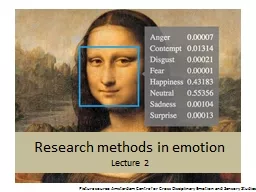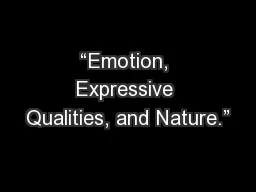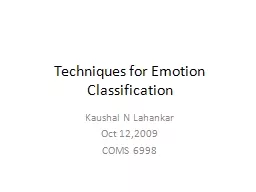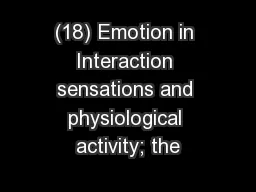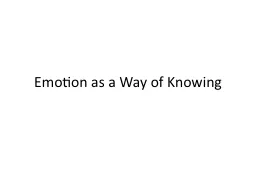PPT-Research methods in emotion
Author : conchita-marotz | Published Date : 2017-12-12
Lecture 2 Picture source Amsterdam Centre for Cross Disciplinary Emotion and Sensory Studies Friendly note This lecture is important for your term paper Manipulating
Presentation Embed Code
Download Presentation
Download Presentation The PPT/PDF document "Research methods in emotion" is the property of its rightful owner. Permission is granted to download and print the materials on this website for personal, non-commercial use only, and to display it on your personal computer provided you do not modify the materials and that you retain all copyright notices contained in the materials. By downloading content from our website, you accept the terms of this agreement.
Research methods in emotion: Transcript
Download Rules Of Document
"Research methods in emotion"The content belongs to its owner. You may download and print it for personal use, without modification, and keep all copyright notices. By downloading, you agree to these terms.
Related Documents

